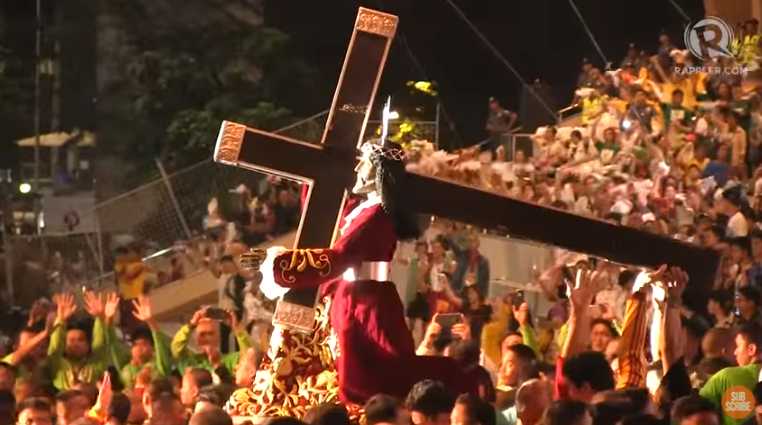 MANILA — Over 200 were injured on Monday as an estimated 1.5 million Filipinos sought to press up against a centuries-old statue of Christ that was marched through the streets of Manila as part of an annual Roman Catholic celebration called the Feast of the Black Nazarene.
MANILA — Over 200 were injured on Monday as an estimated 1.5 million Filipinos sought to press up against a centuries-old statue of Christ that was marched through the streets of Manila as part of an annual Roman Catholic celebration called the Feast of the Black Nazarene.
As previously reported, Catholics in the country, some holding rosaries, banners and/or cloths, seek to touch the wood carving of Jesus carrying the cross out of their belief that it possesses healing powers or can bring good fortune.
“If you seek a favor, it will be granted as long as you pray hard,” Lolit Gonzales, 45, told the Manila Times. She asserted that she had been healed of a knee injury after participating in the event two years ago.
“The Nazarene has given me everything: a stable job and health for my family,” Armando Bantayaun, 57, also told reporters.
The carving, known as the Black Nazarene for the figure’s dark complexion, is believed to have been brought from Mexico to Manila in the 1600’s. It was carried aboard a ship, and although the vessel caught fire, it was not destroyed.
For the past 200 years, millions have flooded the streets as the wooden carving is carried through Manila for its annual feast day.
This year was no exception, as some followers along the 20-hour procession tossed cloths to those who were adjacent to the carriage, hoping that they could swipe the idol for them. Some walked barefoot in the 30-degree weather to show penance and to recreate Jesus’ supposed barefoot act of carrying the cross.
“It’s part of my sacrifice,” Kath Espino, 28, told the Latin American Herald Tribune, advising that she asked the Nazarene that she conceive a child.
Johnny Yu, who leads the Manila Disaster Risk Reduction and Management Office (MDDRMO), told the Philippine Inquirer that most the injuries were minor, but three women who fell after attempting to climb up on the carriage that was carrying the statue were nearly trampled to death. Seven others were also injured after being struck by falling steel railings.
A number of those participating in the procession collapsed, suffered bruises, or complained of elevated blood pressure along the route.
Cheramie Ko, a business owner, told reporters that she has decided to keep her distance after almost being seriously injured in the past.
“I fell in the midst of an avalanche of people and I thought I was going to die until someone managed to pull me out,” she recalled. “I had bruises all over my body. It was a very traumatic experience for me and my family, so I’ve been staying on the sidelines ever since.”
Over 5,000 police were sent to oversee the procession along its route, which began at 5:00 a.m. Monday morning. Despite the injuries, authorities characterized the event as being “peaceful and solemn.”
Philippine President Rodrigo Duterte issued remarks in favor of the observance.
“Good fortunes are usually borne out of hard work and perseverance. Prayers are likely answered because we do not give up or get tired from asking God for the fulfillment of our heart’s desires,” he said. “Such is the phenomenal expression of faith of the millions of devotees in the form of gratitude, petition, and sacrifice shown in the image of the Black Nazarene every feast day on the 9th of January every year.”
Duterte had made local headlines recently after telling those who take issue with this foul language to complain to God.
“If you have something against me, about my mouth, about my character, go to God and complain. He was the one who made me. He is the one to be blamed, not me,” he said.
As previously reported, the vast majority of Filipinos—approximately 80 percent—are Roman Catholic. Only an estimated 2.8 percent of the population professes to be evangelical Christian.
Become a Christian News Network Supporter...


